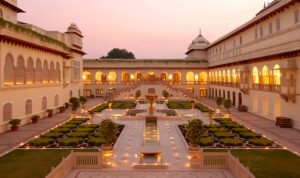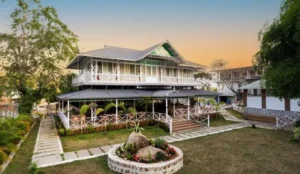India, as a newly independent nation in 1947, was a land of diversity — in culture, language, religion, and traditions. Over the years, the country has undergone significant social changes that have not only transformed the lives of individuals but have also shaped the nation’s very identity. These changes have been a blend of modernization, education, legislation, and social movements, each playing a critical role in breaking barriers and challenging old norms.
The Role of Education in Social Change
Education has been one of the most important driving forces behind social change in modern India. Post-independence, the Indian government focused heavily on spreading education to all parts of the country, especially rural areas, with the belief that empowerment through knowledge was the key to progress.
The spread of literacy: From 12% literacy in 1947, India’s literacy rate rose dramatically to over 74% by the 2011 Census. This was made possible through government programs such as Sarva Shiksha Abhiyan and the Mid-Day Meal Scheme.
Higher education and technological advancements: Establishing IITs, IIMs, and other educational institutions helped build India’s intellectual capital and skilled workforce, propelling India into the global knowledge economy.
The Upliftment of Women
One of the most profound social changes in post-independence India has been the empowerment of women. While India has a rich tradition of strong female figures in its history, the colonial era and traditional norms had often restricted their rights.
Legal Reforms: In 1950, India enacted its Constitution, which granted equal rights to women, ensuring their right to vote, work, and access education. The Hindu Marriage Act (1955), Dowry Prohibition Act (1961), and the Equal Remuneration Act (1976) were landmark laws that aimed at ensuring social justice for women.
Women in Politics: Women like Indira Gandhi became key political figures, with Gandhi becoming India’s first female Prime Minister in 1966. The Panchayati Raj system further allowed women to take active roles in local governance, with reservations for women in elected bodies.
Shifting social roles: Women began to take up professions traditionally dominated by men, and education allowed them to move into fields like medicine, engineering, business, and even space exploration.
The Abolition of Untouchability and Caste-Based Discrimination
The caste system, deeply embedded in Indian society for centuries, has been one of the most challenging barriers to social equality. Post-independence, the Indian government took significant steps to eradicate untouchability and caste-based discrimination.
Constitutional provisions: Dr. B.R. Ambedkar, the chief architect of the Indian Constitution, was instrumental in including provisions that prohibited discrimination based on caste. The Scheduled Castes and Scheduled Tribes (Prevention of Atrocities) Act (1989) was passed to protect marginalized communities from violence and discrimination.
Reservation system: The government introduced affirmative action in the form of reservations in educational institutions and government jobs to uplift historically oppressed groups like the Scheduled Castes, Scheduled Tribes, and Other Backward Classes.
Social movements: Leaders like Dr. Ambedkar and Kanshi Ram sparked movements that fought for the rights and dignity of lower-caste people, while activists like Jotirao Phule worked to challenge the upper-caste monopoly on education.
The Changing Family Structure
The traditional joint family system, where multiple generations lived together, has been gradually replaced by more nuclear families in urban areas. This shift is largely due to economic growth, urbanization, and western influences.
Economic independence: With the rise of women in the workforce and greater economic opportunities, more families started adopting smaller, more independent living arrangements.
Youth empowerment: Young people today have access to a variety of career choices, leading them to prioritize individual aspirations and self-reliance over tradition. This has influenced marriage patterns, with an increasing number of people choosing love marriages over arranged ones.
Social Media and Digital Revolution
The digital age has had a profound impact on the social fabric of India, especially in the last two decades. The internet, social media, and smartphones have brought about a new wave of social change.
Globalization: The internet has made it possible for Indians to connect with the world, access global information, and share their own cultures with others. The rise of social media has allowed people to express their opinions freely and has become a platform for activism and social causes.
Changing lifestyles: Technology has also influenced work patterns, with remote work and freelancing becoming increasingly popular. India’s youth have embraced digital platforms, opening up new avenues for creativity, education, and entrepreneurship.
The Rise of Social Movements
In addition to legal reforms, grassroots social movements have played a critical role in bringing about social changes. Movements like:
The Right to Information (RTI) movement brought transparency in government functioning.
The Nirbhaya protests of 2012 led to stronger laws against sexual violence.
LGBTQ+ rights have gained momentum, with the decriminalization of Section 377 in 2018 marking a historic shift.
These movements show that Indian society is constantly evolving and is increasingly ready to challenge age-old norms in favor of more progressive, inclusive values.
Conclusion: The Journey of Transformation
The social changes in modern India are a testament to the country’s dynamic spirit — one that embraces both its traditions and its aspirations for the future. From empowering women to challenging caste hierarchies, the transformation is far-reaching and continues to shape the Indian way of life.
While the journey is far from complete, India’s ongoing social evolution offers hope for a future of greater equality, justice, and opportunity for all.









